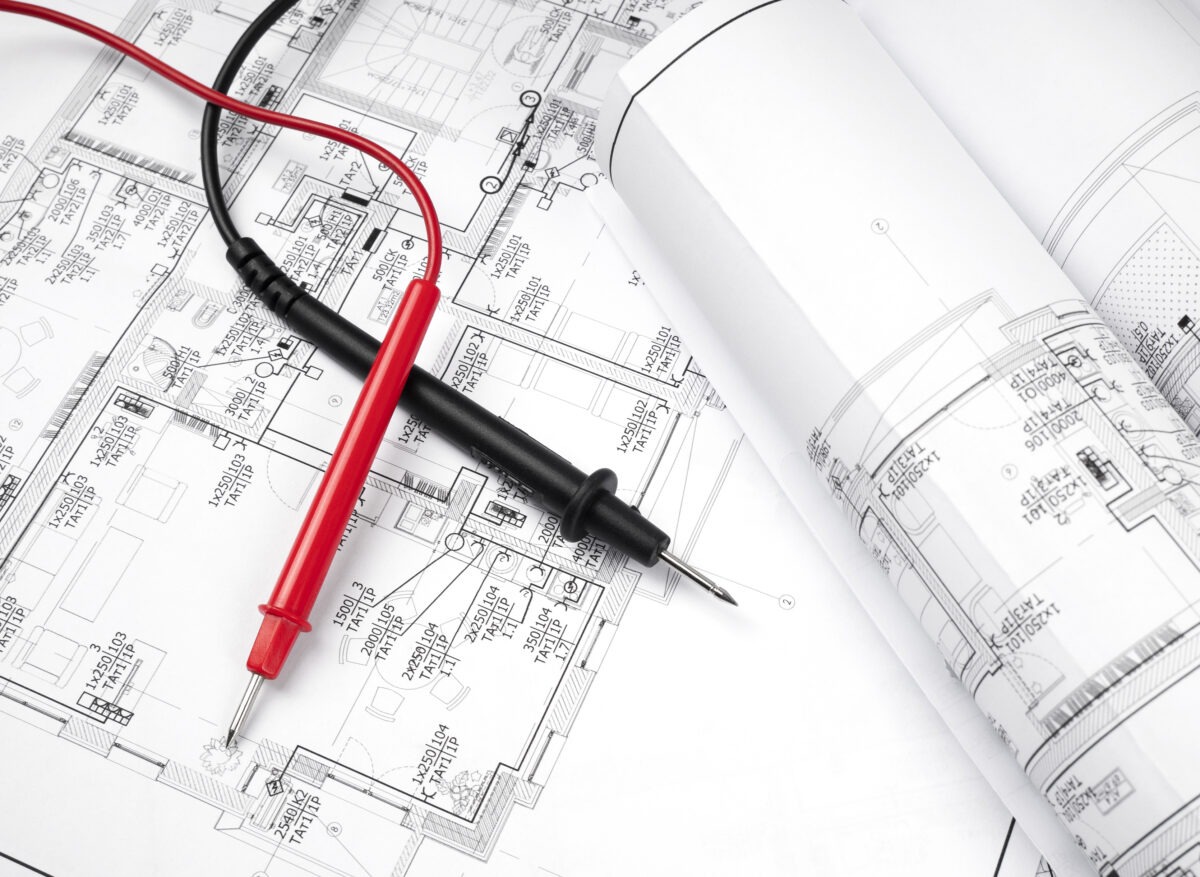MEP Design Services

Looking for a reliable and efficient MEP design services provider in California? MEP design, in other words, Mechanical, Electrical, and Plumbing design, is of great importance in any modern construction project. And California’s construction landscape is no different.
However, navigating the complexities of MEP design is a daunting task. Regarding California, if you are planning an infrastructure project and still wondering what to budget for MEP design, it is normal. It is critical to understand that with the exclusive energy regulations and seismic requirements in the Golden State, precise MEP planning is non-negotiable.
In this environment, understanding what MEP design entails and its associated costs, especially in the context of California, can be a game-changer.
This blog guide offers clear insights into MEP design services in California. In detail, it will explore what businesses should expect from the specialized service providers and the actual cost benchmarks.
For businesses involved in construction and building operations, all the above components are vital when energy efficiency and compliance are priorities. In the specific context of California, these systems should be in alignment with national codes and Title 24 requirements. This implies that designing for highly efficient and sustainable workflows is not optional anymore but mandatory.
Let’s understand each aspect a bit more clearly. From the mechanical standpoint, engineers design HVAC systems that must conform to Title 24 energy standards. They also account for the air quality of the indoors, ventilation rates, heat load calculations, and equipment sizing. They should correspond to efficiency goals while upholding the regional standards.
As for electrical services, modern construction projects in California are progressively incorporating daylight harvesting systems, lighting controls, and battery storage. The purpose here is to fulfill sustainability and grid-interactive criteria specific to California developments.
On the plumbing front, systems related to domestic water supply and sanitary drainage are vital. Additionally, in California, buildings that are required to follow fire safety regulations often feature sprinklers and standpipe systems designed to meet local safety guidelines.
With growing technological advancements, these components are effectively coordinated through BIM workflows.
Likewise, electrical systems gradually include renewable inputs and smart lighting. The goal here is to reduce costs and dependency on grids. On the other hand, neglecting seismic resilience would be a grave mistake. It is vastly important, making it essential for MEP systems to be highly operational and safe during and following an earthquake.
That’s why top-end MEP design service providers, such as National MEP Engineers, consistently emphasize the importance of structural collaboration in minimizing damage risk.
Apart from these, construction projects in California require MEP designers to handle:
One of the most prominent names in this industry, the National MEP Engineers, underscores this holistic approach. Similar pioneering MEP design service providers in California proceed in the same way to ensure functional and code-compliant solutions. It is also vital to mention that these service providers prioritize exploiting BIM for the best results.
Usually, for residential projects in California, this cost falls within the range of $0.50 to $3.00 per square foot. As for larger and more complex projects, this price often goes up further. Considering this, the MEP design expenses for every five thousand square feet may vary between $2,500 and $15,000.
Apart from this, there are the fees associated with change orders. They are extra charges levied by a contractor every time there is a modification in the actual construction work. As a result, MEP design might also change. The approximate additional cost for changes in MEP design can only be determined depending on the alterations needed for particular projects.
Compliance expense is another vital factor within the total costs linked to MEP design services. In the specific context of Title 24 standards, costs can be roughly around:

For developers seeking a partner they can rely on to navigate California’s construction complexities, there is no better choice than Uppteam. We are experts in delivering precise, compliant, and optimized MEP design solutions. Explore our MEP design services and unravel how our California-ready solutions are the best for your requirements.
However, navigating the complexities of MEP design is a daunting task. Regarding California, if you are planning an infrastructure project and still wondering what to budget for MEP design, it is normal. It is critical to understand that with the exclusive energy regulations and seismic requirements in the Golden State, precise MEP planning is non-negotiable.
In this environment, understanding what MEP design entails and its associated costs, especially in the context of California, can be a game-changer.
This blog guide offers clear insights into MEP design services in California. In detail, it will explore what businesses should expect from the specialized service providers and the actual cost benchmarks.
Understanding MEP Design Services
Most straightforwardly, MEP design contains the preparation, coordination, and documentation of an infrastructure’s mechanical, electrical, and plumbing aspects. More specifically, MEP design covers:- Mechanical: HVAC systems, energy management, ductwork
- Electrical: Power distribution, lighting, backup systems
- Plumbing: Water supply, drainage, fire protection
- Additional Disciplines: Acoustic controls, fire alarms, and automation systems
For businesses involved in construction and building operations, all the above components are vital when energy efficiency and compliance are priorities. In the specific context of California, these systems should be in alignment with national codes and Title 24 requirements. This implies that designing for highly efficient and sustainable workflows is not optional anymore but mandatory.
Let’s understand each aspect a bit more clearly. From the mechanical standpoint, engineers design HVAC systems that must conform to Title 24 energy standards. They also account for the air quality of the indoors, ventilation rates, heat load calculations, and equipment sizing. They should correspond to efficiency goals while upholding the regional standards.
As for electrical services, modern construction projects in California are progressively incorporating daylight harvesting systems, lighting controls, and battery storage. The purpose here is to fulfill sustainability and grid-interactive criteria specific to California developments.
On the plumbing front, systems related to domestic water supply and sanitary drainage are vital. Additionally, in California, buildings that are required to follow fire safety regulations often feature sprinklers and standpipe systems designed to meet local safety guidelines.
With growing technological advancements, these components are effectively coordinated through BIM workflows.
Why California Needs Dedicated MEP Expertise
Undoubtedly, the energy efficiency standards, especially Title 24, in the Golden State of the U.S., are stringent. These guidelines, along with the state’s seismic zone, need an immensely technical approach to MEP design. A building’s mechanical systems have to attain high-efficiency ratings, often capitalizing on heat recovery and VRF systems.Likewise, electrical systems gradually include renewable inputs and smart lighting. The goal here is to reduce costs and dependency on grids. On the other hand, neglecting seismic resilience would be a grave mistake. It is vastly important, making it essential for MEP systems to be highly operational and safe during and following an earthquake.
That’s why top-end MEP design service providers, such as National MEP Engineers, consistently emphasize the importance of structural collaboration in minimizing damage risk.
Apart from these, construction projects in California require MEP designers to handle:
- Cutting-Edge HVAC Controls and Demand-Based Ventilation: Pioneering MEP design service providers in California report that incorporating innovative systems drastically boosts energy efficiency. Most of the developers in California expect this.
- Sector-Specific Needs: Multifamily housing projects in the Golden State take advantage of coordinated MEP systems. The purpose behind them is to curtail on-field assembly times and speed deliverables. For transportation-related projects, efficient MEP design guarantees proper ventilation, passenger comfort, compliance with energy-saving standards, and resilience against natural disasters.
Deliverables to Expect
High-standard and accurate MEP design services in California typically offer:- Thorough plans and schematics for HVAC, electrical, and plumbing.
- Load calculations, along with equipment schedules.
- 2D and 3D BIM integration with clash spotting.
- Piping layouts, riser diagrams, and fixture schedules.
- Construction-ready documentation with notes, tags, and legends.
One of the most prominent names in this industry, the National MEP Engineers, underscores this holistic approach. Similar pioneering MEP design service providers in California proceed in the same way to ensure functional and code-compliant solutions. It is also vital to mention that these service providers prioritize exploiting BIM for the best results.
Factors Influencing MEP Design Costs in California
The expenses related to MEP design rely significantly on complexity, scope, efficiency needs, and the type of construction project.- Building Type: Multifamily and office construction projects generally cost less in comparison to high-tech infrastructure, such as data centers.
- Efficiency Objectives: Building projects that target net-zero certification or LEED certification include complex and rigorous testing processes.
- System Complexity: Complex projects like data centers need extra systems and supervision, enhancing design efforts.
Typical Costs Associated with MEP Design
Generally, for the most part, the construction expense remains the same as predicted ahead of a project’s beginning. However, there can be some variations, but not too much. MEP design services constitute quite a sufficient percentage of the overall construction cost. This cost largely depends on the project scope, complexity, and type.Usually, for residential projects in California, this cost falls within the range of $0.50 to $3.00 per square foot. As for larger and more complex projects, this price often goes up further. Considering this, the MEP design expenses for every five thousand square feet may vary between $2,500 and $15,000.
Apart from this, there are the fees associated with change orders. They are extra charges levied by a contractor every time there is a modification in the actual construction work. As a result, MEP design might also change. The approximate additional cost for changes in MEP design can only be determined depending on the alterations needed for particular projects.
Compliance expense is another vital factor within the total costs linked to MEP design services. In the specific context of Title 24 standards, costs can be roughly around:

Cost-Efficiency Tactics
There are some easy, yet highly effective strategies that construction projects in California can apply to keep a project’s MEP design expenses to a minimum.- Automated BIM Integration: Detecting clashes at the initial stage helps eliminate expensive rework during construction.
- Standard Equipment Packages: Utilizing well-recognized HVAC and electrical elements assists in avoiding custom engineering markups.
- Phased Title 24 Modeling: Timing energy simulations during the later stages of the design procedure decreases iterations.
- Capitalize on Modular Systems: Specifically, in multifamily infrastructure projects, driving down on-site labor expenses and time with the help of factory-fabricated MEP assemblies.
Choosing the Ideal MEP Design Partner
There are certain factors that construction developers in California need to take into account when selecting the ideal MEP design partner:- First of all, the provider must have relevant code experience. They need to be well-versed in Title 24, Title 19, and regional permitting requirements.
- Top-level BIM proficiency is the next significant factor. Before opting for the best design service provider, developers should ask about Navisworks or Revit workflows and clash resolution approaches.
- Firms with proven track records in data centers, multifamily, or transit hubs typically deal with energy and coordination complexities better.
- Always search for MEP design firms that provide tiered fees and offer explicit descriptions of the involved deliverables.
- Operational assistance is another crucial aspect. MEP design service providers who offer post-design help at the time of construction and commissioning should be the first choice for California builders and developers.
Conclusion
MEP design is compulsory in construction projects in California. It has the capacity to directly influence energy efficiency, project timeline, code conformance, and lasting performance. Expert California-based MEP design firms know about this and build services that revolve around BIM coordination, readiness related to Title 24, and realistic cost efficiencies.For developers seeking a partner they can rely on to navigate California’s construction complexities, there is no better choice than Uppteam. We are experts in delivering precise, compliant, and optimized MEP design solutions. Explore our MEP design services and unravel how our California-ready solutions are the best for your requirements.


















